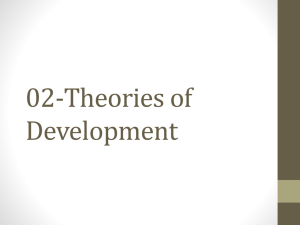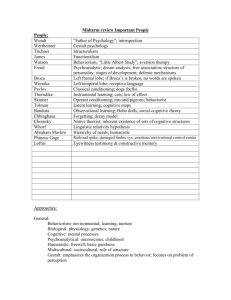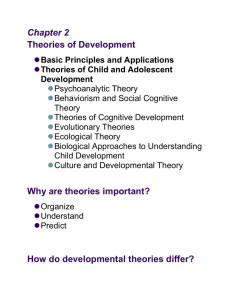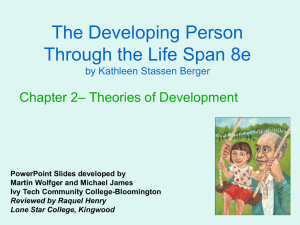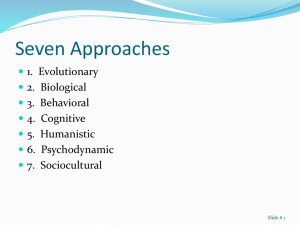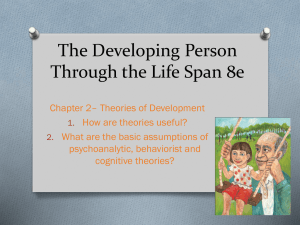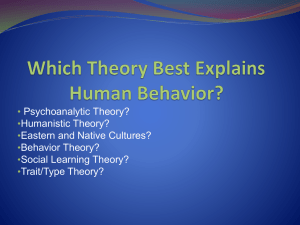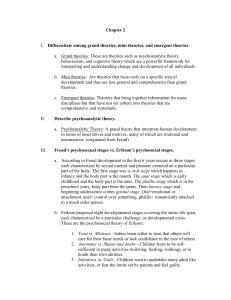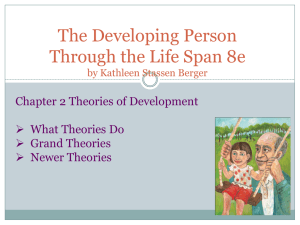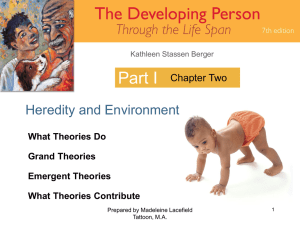Current Paradigms in Psychopathology and
advertisement
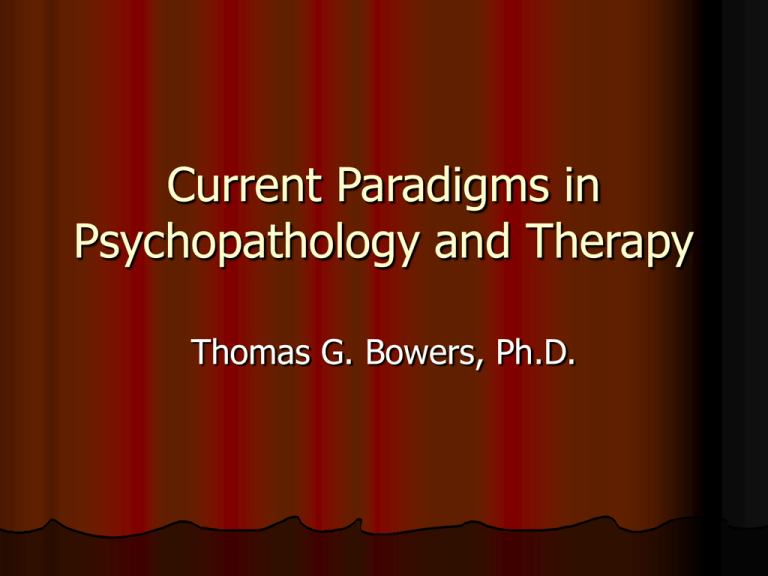
Current Paradigms in Psychopathology and Therapy Thomas G. Bowers, Ph.D. Current Paradigms An overview: Biological Psychoanalytic Humanistic Learning Cognitive & existential Biological Medical or disease model Sprang from germ theory Contemporary approaches Behavioral genetics Genotypes Phenotypes Diathesis Twin studies (MZ v. DZ) Biological Biochemistry of CNS Neurons Neurotransmitters Synapse Evaluation Physiology is tempting Problems in reductionism Psychoanalysis Classical theory Psyche Id Ego Superego Motivated by psychic energy Libido Unconscious Psychoanalytic Stages of psychosexual development Oral (-18 months) Anal (18- 36 months) Phallic (age 3 - 5) Latency (~6 – 12) Genital (13 +) Fixation can occur, and regression under stress Psychoanalytic Complexes Oedipus Electra Some therapeutic aspects Transference Countertransference Lengthy treatment Psychoanalytic Evaluation Critical views, but fundamental aspects of psychoanalysis may be useful Humanistic and Existential Roger’s clientcentered view Positive view of human kind Unconditional positive regard Empathy Genuineness Gestalt therapy Difficult to evaluate Learning Theories Behaviorism Later developments Classical conditioning – Pavlov Operant conditioning – Watson Thorndike Mediational models Behavior therapy Strong empirical basis Learning Theories Behaviorism Skinner’s Theoretical Contributions Cognitive Theories Basis Refers to schema (cognitive set) Developed by Beck, Ellis Strong empirical basis for treatment Attempts at Integration Diathesis-stress model Eclecticism
